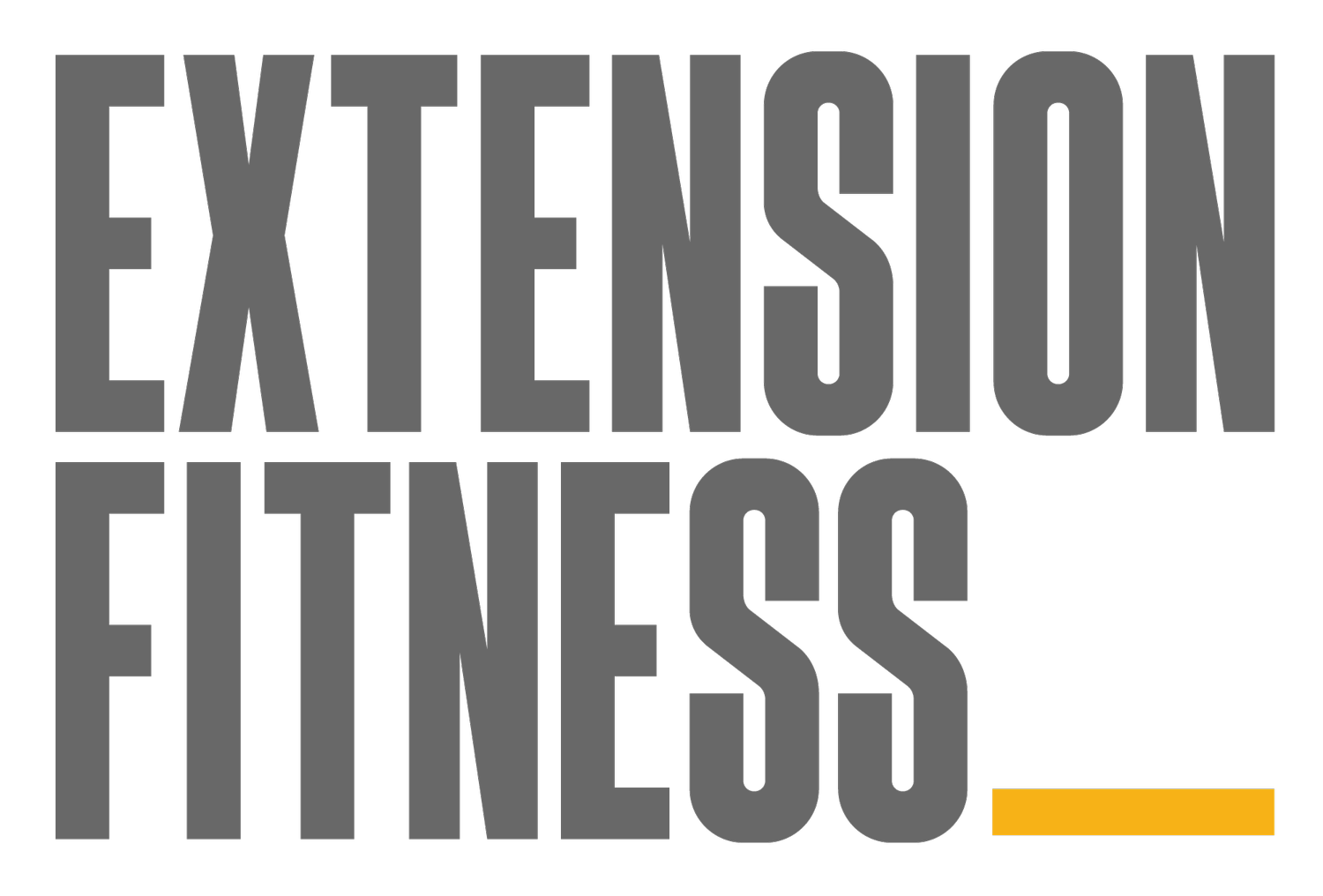Resistance Training Guidelines
What is Resistance Training?
Resistance training involves the application of load to a movement pattern. These movements are repeated so that the body gets stronger after recovery from the training stimulus has occured (the change comes about by changes in many of the body systems - nervous, muscular, skeletal and more).
How intense should my training be?
Extension Fitness uses the RPE (Rating of Perceived Exertion) and RIR (Reps in Reserve) Model for setting intensity. Please review this helpful video from Youtuber and strength coach, Alan Thrall.
RPE can be used as a subjective measure of effort in strength AND endurance based exercise. When used in strength training, it is often coupled with a "reps in reserve" measure. "Reps in reserve" is how many more repetitions you think could be successfully completed at a given weight. It assumes a reasonable degree of experience in resistance training. New lifters may find their technique degrades significantly before they reach their force production limit. It is better to undershoot your efforts, maintain good form, and avoid overtraining and injury. Getting stronger happens over weeks, months and years - a single session or set is not what matters.
RPE SCALE FOR STRENGTH TRAINING (with "reps in reserve" or RIR)
10 = Could do no more reps or load - 0 REPS IN RESERVE (0RIR)
9.5 = Could do no more reps, could do slightly more load - 0.5 REPS IN RESERVE (0.5RIR)
9 = Could do one more rep - 1 REP IN RESERVE (1RIR)
8.5 = Could definitely do one more rep, chance at two - 1.5 REPS IN RESERVE (1.5RIR)
8 = Could do two more reps - 2 REPS IN RESERVE (2RIR)
7.5 = Could definitely do two more reps, chance at 3 - 2.5 REPS IN RESERVE (2.5RIR)
7 = Could do three more reps - 3 REPS IN RESERVE (3RIR)
5-6 = Could do four to six more reps
1-4 = Very light to light effort
What are “Reps” anyway?
One repetition of the prescribed exercise. For example, if you have been given a squat exercise, you lower your body towards the ground and raise it up. This is one squat - one "rep". If you repeat the movement ten times, that is ten repetitions or ten "reps".
What are “Sets”?
Using our squat example, you may be asked to do ten "reps", then rest for 60 seconds, and do another ten "reps". This would be two "sets" - a "set" is one uninterrupted block of reps. It is usually followed by a rest period to allow for recovery time before the next "set".
What’s a “Rep Range”?
Your program may contain something like this: Leg Press - 5-15r @ 8RPE(2RIR). Here, you're being prescribed a "rep range". You should select a weight that allows you to do a number of reps that falls within the range specified (5-15) at the effort level stated. Your last rep occurs when you hit the prescribed effort level. In the example given, your last rep would occur when you reach an effort level where you could only do 2 more reps (i.e. 2 "reps in reserve"). If you hit that intensity before the start of the range, then lower the weight next time. If you hit it after the end of that range, then raise the weight next time.
What’s a “Superset”?
A superset is commonly used in two ways: 1 - In describing the performance of a lower body exercise set immediately followed by an upper body exercise set with no rest (e.g. squats then chin ups with no rest) 2 - In describing the performance of two upper or lower body exercise sets in sequence without rest between sets (e.g. squats then lunges). Supersets are used for different reasons, but commonly they are used to allow for resistace training to occur with less rest without causing undue muscular fatigue (as in example 1 above). In this situation, a helpful cardiorespiratory training effect can be produced. For many time poor people, this can be a great way to kill two birds with one stone.
What’s a Warmup Set?
This is doing repetitions of the exercise specified in your program at a lower intensity/load/weight than you'll be doing your "work sets" at. For example if you were doing 7 reps of barbell squats as a "work set", and the specified intensity was 7RPE/3RIR, which corresponded to a weight of 40kg (for you), you may choose to do two "warm up sets" - one at 20kg (bar only) and one at 30kg (bar plus 2 x 5kg plates). The purpose is to prepare your body and mind for the "work set" weight. It is important to diligently do your warm up sets when engaging in resistance training.
What’s a “Work Set”?
"Work sets" refer to the sets of the specified exercise you will do to produce the desired outcome, as opposed to "warm up sets", which are intended to prepare your body and mind for the "work sets". The intensity (load/weight) and the number of reps in your "work sets" may vary depending on the outcome you're seeking. Your coach will prescribe "work sets" that support your goals.
